August 27, 2020
This Week in Herreshoff History: August 27
Catamarans, steam yachts, an eagle hunt, triumphs and travails of a Cup Defender, some wonderful tugboat photos, and a flag raising
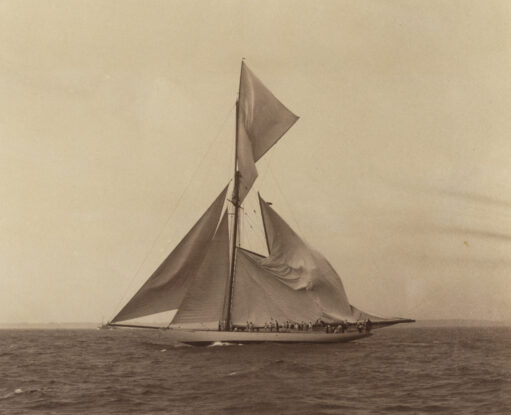
August 25, 1877
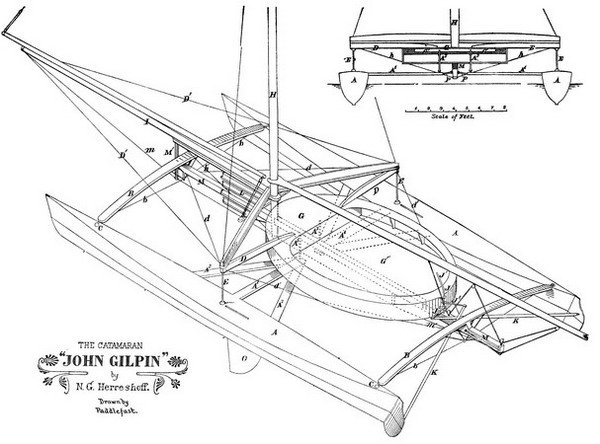
A correspondent conflates the two Herreshoff brothers into one talented man! Or at least, does not clearly distinguish the two. In defense of the anonymous correspondent, it was five months prior to the brothers' formal incorporation of HMCo. and early days for their fame: "Just beyond the pier at Fort Rounds," writes a correspondent from this town, "the road curves past the old Herreshoff mansion, and the long low building where the Herreshoff brothers have their extensive boat building establishment. The Herreshoff boats are famed for their speed and graceful motion, but few are aware that the master hand that fashions these boats is guided by a sort of instinct and an acute sense of feeling, for the builder is blind, and has been from childhood. He discovers defects in the lumber by passing his hand over it, occasionally rapping and applying his ear. Not a plank is added to his boats until material and curve, its length and breadth have passed under his critical supervision. All around are moored a variety of boats for rowing and sailing. Here we think are the smallest vessels ever known to be propelled by steam, boiler and machinery in miniature, but perfect every way. Here are the new boats styled the Catamarans, an original idea of Mr. Herreshoff's. In a race [The Open Centennial Regatta] out of New York last year the lookers on laughed and jeered as this double boat [AMARYLLIS] with a deck between joined the trim crafts as a competitor. But the odd shaped boat flew over the waters with a swiftness that left the other vessels behind, while the ridicule of the spectators was changed to wonder and admiration. But Mr. H. did not win the prize, as by some quibble the boat was not allowed, not belonging to the kind entered for the race...''
August 25, 1883
Notice is given of the launching of the steam yacht MAGNOLIA (HMCo. #104) the previous Saturday, August 23. Her owner Fairman Rogers of Philadelphia and Newport had quite a list of requirements in her construction, according to an 1885 report given to the Philadelphia chapter of the Engineers Club and later published in Engineers and Engineering: "The following conditions were required to be fulfilled in her design: Light draft, not more than 4 ft., length and breadth such as to enable her to pass through the Erie Canal locks, which are 100 x 18 ft., flat floor, large accommodations for cruising and for a long residence of the owner's family on board, flush deck, no projection of steam drums, etc., above deck, except the smoke-stack. Low speed, not less than 8 miles per hour. Minimum head room below, 6 ft. 6 ins. Adapted specially for inland cruising along the Atlantic coast...." Luckily for HMCo. and their burgeoning reputation, "She turned out to be entirely satisfactory..." Nonetheless, this was the only contract J.B.H. and N.G.H. ever signed with Mr. Rogers.
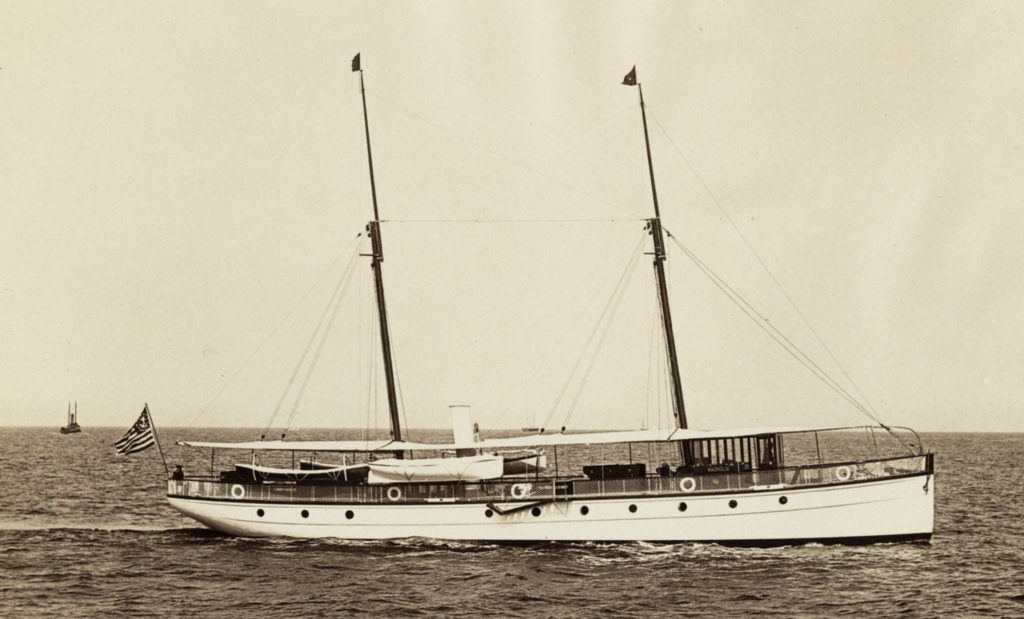
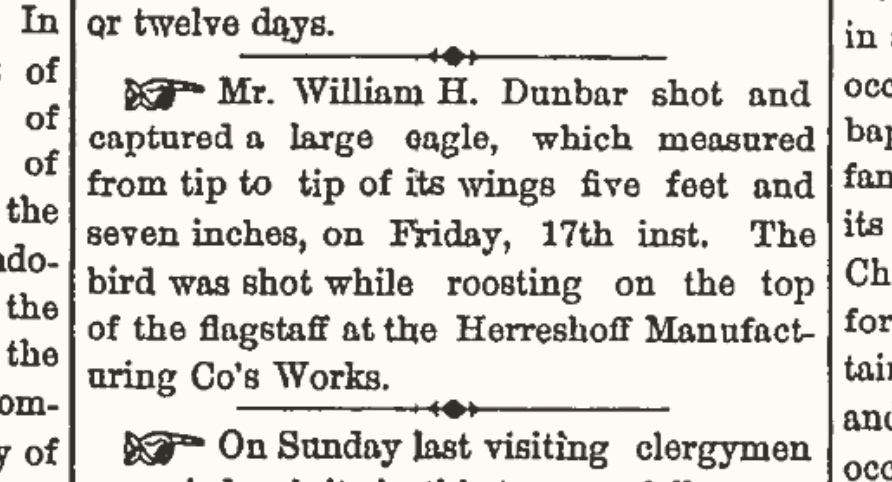
On the same page it is reported one William H. Dunbar "shot and captured" an eagle roosting on the HMCo. flagpole with a 5'7" wingspan. Further details tantalizingly lacking. While this short anecdote leaves us with more questions than answers, it does remind us of another HMCo. eagle story. Can you guess which HMCo. vessel was launched with a great stuffed dead eagle for a figurehead, flanked by bunting and garlands? Guesses welcome in the comments below, or stay tuned next week for the answer...
August 23 and 27, 1895
DEFENDER (HMCo. #452) arrives for repairs and runs aground off Hog Island on her way in. She is then prepared to depart again after just a few days of around-the-clock repairs. DEFENDER had returned to HMCo. in order to be re-rigged with a new, heavier mast which arrived in Bristol from Boston by train. The Cup Defender then headed to New Rochelle where syndicate head C. Oliver Iselin had a summer residence. It is reported that J.B.H. family and friends aboard J.B.'s yacht EUGENIA (most likely HMCo. #182, EUGENIA II - J.B.H. had four EUGENIA's in total) are also on their way to visit with Iselin in New Rochelle. DEFENDER, having no engine, was taken in tow to New Rochelle by the tugboat WALLACE B. FLINT.
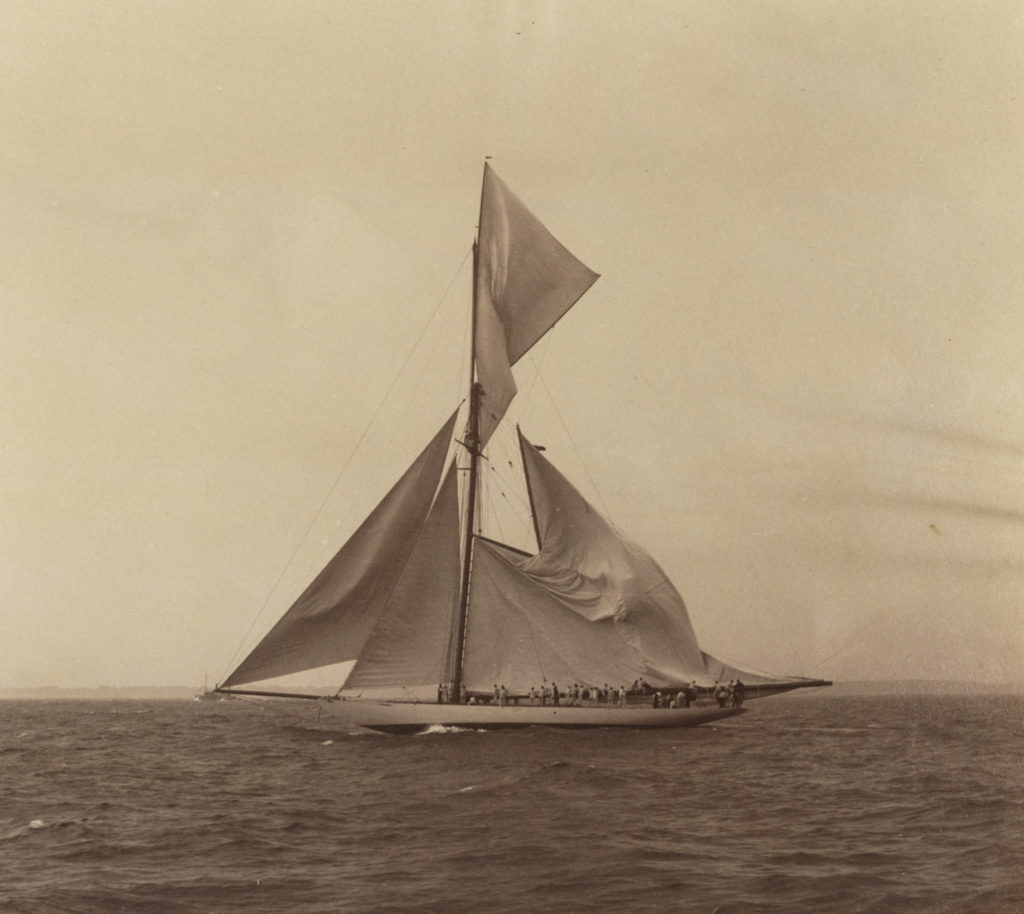
DEFENDER during the Goelet Cup race on August 2, 1895 during which her gaff broke, photographed just moments after the event; image courtesy of the Stebbins Photographic collection, Historic New England 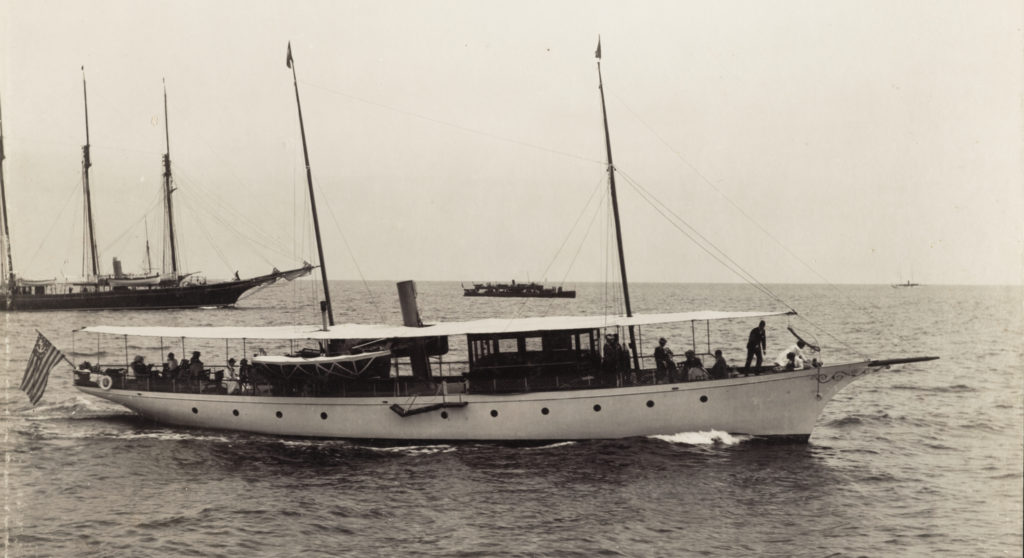
EUGENIA II (by this time named POLYANTHUS) photographed by Stebbins in 1899; image courtesy of the Stebbins Photographic collection, Historic New England
August 27, 1918

The Phoenix reports more news of the flagpole related variety (this time a bit more sporting than an eagle hunt) marking a pontoon launching, concert and flag raising. The ceremonies were intended to "publicly express the good feeling that existed between the men and the company, loyalty to the flag and country, and a determination of the employees to do their part in the high record of efficiency maintained by the Herreshoff Manufacturing Company" It is also reported that "at the top of the flagpole is a weather vane in the shape of a steel worker's sledge hammer..." as the funds were primarily raised by HMCo. steel workers. We invite you to submit your own interpretations of this design for possible future replication on our current waterfront flagpole, which unfortunately lost its topper in a storm a few years ago; please direct your design proposals to [email protected] .
